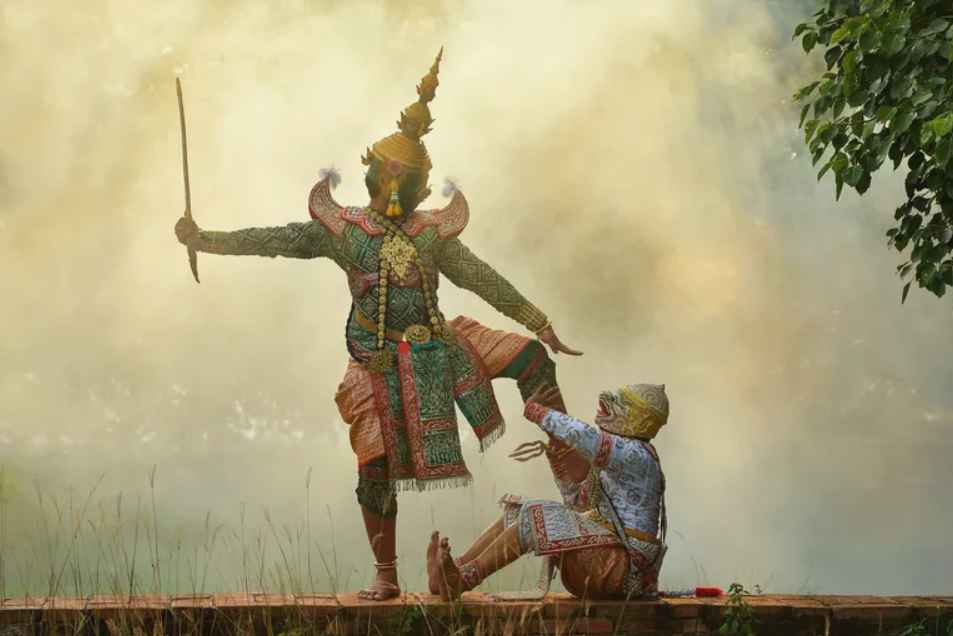Leaderboard
Popular Content
Showing content with the highest reputation on 05/17/2021 in all areas
-
Short Essay 2 The entry point to this series of thoughts was this small paragraph in the introductory pages of Boxing A Cultural History (2012, Kasia Boddy): It's a very tantalizing if elliptic string of thought, broad-ranging in its possible application to combat sports. It opens up an ethical vista which could suggest that combat sports - and by extension most other sports, in a more diluted way - perform a rite, a ritual what works to cleanse or protect the social group, psychically. Sport is too varied to be reduced to this, but perhaps there is a very dark root to combat sports, and in particular much more traditional fighting sport/arts like Thailand's Muay Thai, which is imbued with magical observances and is tightly woven into community patterns and ritual which likely go back centuries, if not thousands of years. In any case, it was this small paragraph above, that put me to a deep dive, out of which this series of short essays has arisen. I wanted to give you the impetus of these thoughts so it would be easier to follow along what may feel like a circuitous argument and description. What I'm pointing to is the perhaps likely possibility that the purpose of fighting arts rites is the actual production of the loser as the (sacred) sacrificial victim. While attention is inordinately paid to the winners, and the point of fighting sports feels as if it is to produce winners, the true, deeper aim is the production of losers...and we lose sight of this because of the very Nature of what the loser takes on, the shamefulness that brings them out of sight, and causes them to be forgotten. With that put to the side, in this short essay I'd like to take up the second vector of Thailand's Muay Thai, what I am calling "divinity". The first short essay outlined "animality" as a force and a value judgement, but animality only gains it's full relevance in tension with the second vector: the "y axis" of divinity. There is a certain sense in which it is very easy to see how this dichotomy fits perfectly within Thai Buddhism. In this polarity that force of the fight, the dramatic import is ideally that of the hero (victor) playing the role of Vishnu, and overcoming the demonic, which in larger extrapolation would be the desires and weaknesses that Buddhism itself seeks to overcome. This explains all the parallels that are drawn between the endeavors of the Nak Muay and that of monks (written about some here), all the ways in the fighter seeks equinimity of mind, and even more importantly, the techniques and intelligence that one is trained in to overcome mere animalistic "chon". Animals have "chon", men have "art". The "femeu" fighter is the artistic one, the one who controls the animalistic within, overcoming himself/herself, and the animalistic without...the opponent, through art. Hence, this is a vertical vector. The artful fighter rises above the chon of the fight. There is a great deal that has been layered into this dichotomy, which places one fighter on the side of the animal, and one on the side of the human/divine. We have the prototypical Matador vs the Bull (a historical dramatic performance very likely derived from animal sacrifice, reaching back to Mesopotamia), wherein human art triumphs symbolically over the animal. And in Thailand's Muay Thai one can see the heritage of "Muay Femeu" (evasive, artful, tactical fighters) vs "Muay Khao" (forward advancing, relentless, exhaustable knee fighters). The Muay Femeu vs Muay Khao tension is also played out in Thailand along sociological lines, wherein the femeu ideotype is anchored in the ideology of Bangkok, and Royal patronage, and the Muay Khao ideotype is seen as that of the agrarian provincial (less educated) "worker". The divinity/animality, art vs chon tension maps well onto this sociological divide. But we are getting ahead of ourselves. I bring up these larger sociological pictures - which are the lens through which so much of Thailand's Muay Thai is thought about and enjoyed - so we can look back into the original sources of this dichotomy, likely rooted in provincial, ritualistic, festival fighting stretching back perhaps centuries. From the beginning the values of animality (its energies, force and weaknesses) have been likely tempered by the values of divinity, in the ring, in every fight, reaching back into the origins of sacrifice itself, wherein sacrifice becomes sport. If femeu fighting is the human (as it relates to, and even embodies the divine) enacts Buddhism's project of overcoming the passions of what is animal in all of us, this is done through specific arts and training. Techniques. Just as there are meditative (and magical) techniques, there are fighting techniques. Glorified fighters like Samart - who may rest at the acme of the femeu ideotype - at times feel like they are not even fighting. It is as if they float above the conflict, are never drawn in, but, they express their superiority over animality through the theatrics of techniques. At the time of conflict the technique (the blow, the slip, the physical freedom in a specific execution) stands out. It shines. While the criticism of Muay Khao fighters almost invariabily falls to the idea "no IQ" (and this is said of very great fighters, as well as by great Muay Khao fighters leveling critique on other great Muay Khao fighters), "just a bull" (an iconic animal of agrarian provincial culture), femeu fighters are celebrated for their "eyes" and for the way in which technique is able to just stand out. You can see the art suddenly there, in moments of great drama, just as you can see the matador's sword go in, or the executioner's weapon fall. This is important. It points to the highly ritualistic dimension of the roots of Thailand's Muay Thai. That Ladder of Being is scaled by human art and technique. The passions are overcome, no less than how a monk in meditation in a cave, through techniques of breathing and mind, overcomes the passions within himself. But, what is different is that supremacy of technique, the moment of the sword, is dramatically displayed and re-enacted, again and again and again, in this particular version (interpretation) of events. Leaving aside the difficult ideological dimensions of this (the urban vs the village, the royal vs the worker, it feels as if if we travel back to the rites themselves we will come upon a profound truth as to what fighting is, and what it does. What it enacts. If we can particularize the Ur-act of dramatic fighting around the mechanism of sacrifice, we can then untangle, productively, much of what has been built up upon that originary core, a core which likely operates, psychically, today.1 point
-
An overprotective coach is a much lesser problem compared with a coach whom doesnt care, whom isnt YOUR ally.... I believe Sylvie has written about this aspect too. So while you should abandon and flee such an non caring coach and gym, I do hope its "just" to talk it through honestly and openly with this overprotective coach... Hopefully you will get a new balance. If not, you may think on changing gym - hopefully with this coach blessings and advice whom to choose instead. This problem reminds me about another but similiar problem. Its usually guys telling about sparring with females they dont know well. Ie, they often do avoid to sparr women, or take it supereasy on them. They dont wish to hurt the girls, nor get negative reactions from the girls nor their pals. There are several different aspects to see this. Some are entirely legitimate! As I see it, its because, in the clubs in west, its common many of the women training in Muay clubs, arent wanna be fighters, many are really into fitness. (Or beginners) So they fitness fighters are often technically decently knowleable, and thus able to do some good sparring, but only as long as its friendly and easy on them... But they dont wish to risk pains nor hurts... So a female Muay, whom IS a wanna be fighter, and thus, doesnt mind some rough sparr - yes even WISHES hard tough sparring - must tell about this. Or even herself challenge these guys or the more advanced female fighters present... To be honest, its not only a guy - female thing, this being overprotective, even if its the frequently described. I have seen female fighters, whom by the same reasons avoid to sparr against other women: the ouches and scared crys begins immediately the beating begins... I think the long term solution is to have some system of labels; essentially: Im a wanna be fighter; Im OK with serious sparring, even if it hurts some. Or; Im a fitness fighter. Im able to do technically advanced sparring, but it must be on a light and friendly niveu. And perhaps equvalents for beginners. The short term solution is, exactly as above, to try and talk with each other. Talk by mouth, body language, behavior in the gym... Good luck!1 point
Footer title
This content can be configured within your theme settings in your ACP. You can add any HTML including images, paragraphs and lists.
Footer title
This content can be configured within your theme settings in your ACP. You can add any HTML including images, paragraphs and lists.
Footer title
This content can be configured within your theme settings in your ACP. You can add any HTML including images, paragraphs and lists.

